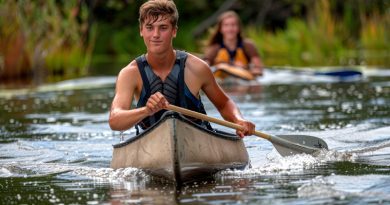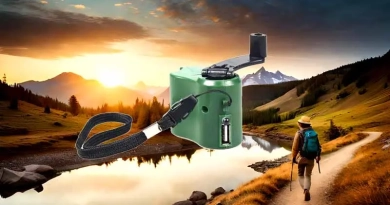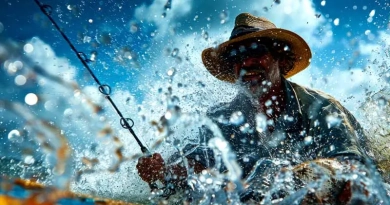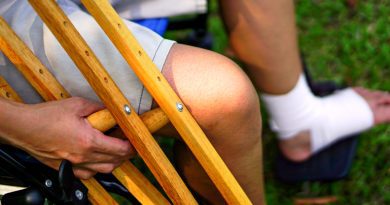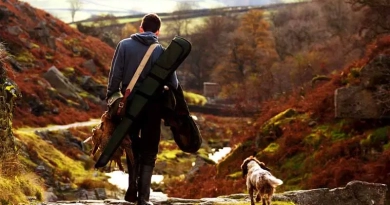
How Do I Handle Injuries While Camping?
Under the vast expanse of the starlit sky, away from the comforting clamor of civilization, the wilderness offers a serene yet unforgiving backdrop for adventurers. It was during one such escapade, nestled in the rugged arms of the Rockies, that the pressing question first struck me: How do I handle injuries while camping? This inquiry isn’t just about preparedness—it’s about maintaining the fine balance between adventure and safety.
The Stark Reality of Wilderness Injuries
When camping in the wilderness, injuries can range from the simple to the severe, presenting unique challenges due to the isolation and unpredictability of the natural environment. This complex backdrop requires a comprehensive understanding and a well-prepared response strategy. Let’s delve deeper into the nuances of managing injuries in the wild and navigating medical preparedness effectively.
The Complexity of Injuries in the Wild
In the wilderness, a simple scrape or bruise can be just the beginning. More severe challenges like fractures, animal bites, or weather-related conditions such as hypothermia and heat exhaustion can occur without warning. The primary issue here is not just the injury itself but also the isolation it happens in. Far from medical facilities, a cut can become infected, or a fracture can worsen without proper care. Additionally, the unpredictable nature of the wild adds further complexity. Sudden weather changes, difficult terrain, and unexpected encounters with wildlife can all turn a manageable situation into a critical one. In these moments, the environment transforms from a passive backdrop into an active player in the survival narrative, influencing every decision you make.
Navigating the Maze of Medical Preparedness
1. Knowledge as a Crucial Tool: Understanding the basics of first aid is essential but often overlooked by many adventurers. This knowledge gap can quickly escalate a manageable situation into a life-threatening crisis. Basic first aid skills, such as how to clean and dress wounds, stabilize fractures, or create makeshift splints, are indispensable. Furthermore, being able to recognize the signs and symptoms of more severe conditions, like shock or heat stroke, can make a significant difference in the outcome.
2. Managing with Limited Resources: Even with a well-stocked first aid kit, the wilderness demands that you make do with what you have, which might be far less than what a medical facility can offer. Effective use of limited resources requires not only knowledge but also creativity and improvisation. For instance, knowing how to use a bandana as a sling or a tarp as an emergency stretcher can be lifesaving.
3. Overcoming Immediate Response Challenges: In urban settings, the ‘golden hour’ refers to the critical first hour after an injury where prompt medical treatment can greatly improve outcomes. In the wilderness, this concept stretches, as help could be several hours away, or more. Immediate and appropriate response becomes crucial, emphasizing the need to stabilize the injured person and prevent further harm until professional help can be reached.
Best Strategies for Managing Injuries in the Wild
Step 1: Comprehensive Education: Before heading out, it’s advisable for you and your group to take a wilderness first aid course. These courses are specifically designed to address the unique challenges of outdoor environments. They cover essential skills like CPR and emergency response strategies tailored to handle injuries from wildlife, natural elements, and accidents.
Step 2: Tailoring Your First Aid Kit: A comprehensive first aid kit should be adapted to the nature of your trip and potential risks. This kit might include:
- Advanced Supplies: Beyond basics like bandages and antiseptics, include items such as butterfly closures for deep cuts, hydrogel pads for burns, and irrigation syringes for cleaning wounds.
- Injury-Specific Items: Splints for fractures, thermal blankets for hypothermia, and electrolytes for dehydration are crucial.
- Personal Medications: Always carry necessary prescription medications and ensure they are accessible and adequately stored.
Step 3: Safety Protocols and Planning: Effective planning involves clear communication and predefined protocols. Establish and practice what each group member should do in different injury scenarios. Identify and assign roles, such as who is responsible for first aid, who handles communication, and who leads in navigating back to safety.
Step 4: Ensuring Effective Communication and Rescue Options: Understanding the communication options available in your chosen area is vital. Carrying a satellite phone or a GPS device with SOS capabilities can be crucial for initiating a rescue operation. Familiarize yourself with the location of ranger stations, access points, and potential helicopter landing zones, if available.
By addressing these aspects comprehensively, campers can ensure they are prepared not only to handle injuries effectively but also to integrate safety seamlessly into the adventure, turning potential crises into manageable situations. This preparation allows the wilderness to remain a place of wonder rather than peril.
Essential Resources and Tools
To ensure you’re equipped to handle injuries, here are some tools and resources:
- Wilderness First Aid Course: Look for courses offered by organizations like the Red Cross or local outdoor groups.
- Reliable First Aid Kit: You can assemble your own kit or purchase a pre-assembled kit from outdoor retailers.
- Emergency Communication Device: A satellite phone or a GPS messenger can be a lifesaver in remote areas.
- Local Area Research: Know about the local wildlife, plants, and weather conditions that could affect your safety.
Concluding Under the Canopy of Stars
As the embers of the campfire glow softly against the dark, it’s comforting to know that preparedness is the companion that lets us enjoy the thrilling narratives the wilderness writes for us. Handling injuries while camping isn’t just about reacting to accidents—it’s about weaving safety into the tapestry of adventure. With the right knowledge and tools, the wild becomes less daunting, and each story more enriching. Stay safe, and let the wilderness inspire stories of adventure, not caution.

